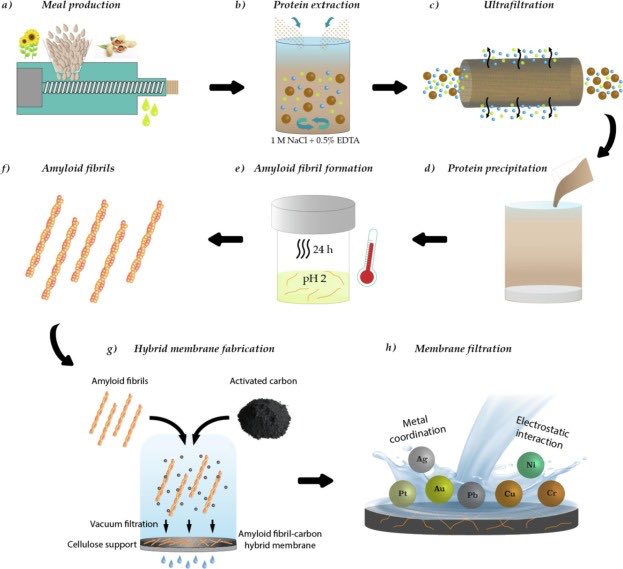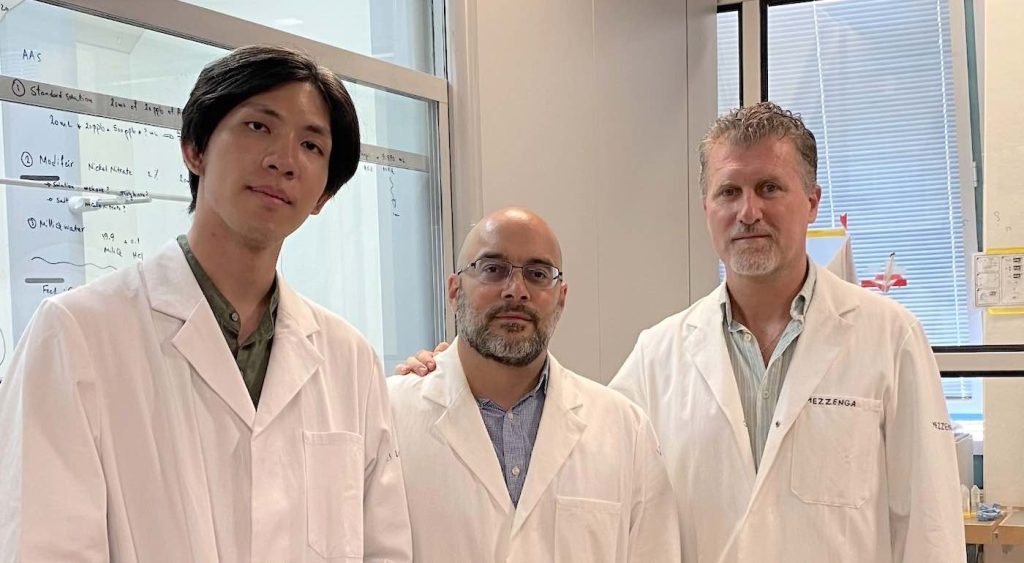Scientists just announced they have created a membrane made from a waste by-product of vegetable oil manufacturing, which can filter out heavy metals from contaminated water.
They discovered that proteins derived from the by-products of peanut or sunflower oil production can attract heavy metal ions very effectively.
The study showed that this process of attraction, called adsorption, was able to purify contaminated water so it meets international drinking standards.
Current technologies are energy-intensive, require power to operate, or are highly selective in what they filter. However, their membrane has the potential to be a cheap, low-power, sustainable, and scalable method.
“Heavy metals represent a large group of water pollutants that can accumulate in the human body, causing cancer and mutagenic diseases,” said Professor Ali Miserez at Nanyang Technological University in Singapore (NTU). Our work puts heavy metal where it belongs—as a music genre and not a pollutant in drinking water.”
The production of household vegetable oils generates waste by-products called oilseed meals. These are the protein-rich leftovers that remain after the oil has been extracted from the raw plant.
The NTU-led research team used the oilseed meals from two common vegetable oils—sunflower and peanut oils. After extracting the proteins from oilseed meals, the team turned them into nano-sized protein amyloid fibrils, which are rope-like structures made of tightly-wound proteins. These protein fibrils are drawn to heavy metals and act like a molecular sieve, trapping heavy metal ions as they pass by.
LOOK: Turning Seawater Into Drinking Water – With the Push of a Button
Transforming waste into water filters
“This is the first time amyloid fibrils have been obtained from sunflower and peanut proteins,” said the paper’s first author, NTU PhD student Mr Soon Wei Long.
The researchers combined the extracted amyloid fibrils with activated carbon—a commonly-used filtration material—to form a hybrid membrane. They tested their membranes on three common heavy metal pollutants: platinum, chromium and lead.
As contaminated water flows through the membrane, the heavy metal ions stick onto the surface of the amyloid fibrils – a process called adsorption. The high surface-to-volume ratio of amyloid fibrils makes them efficient in adsorbing a large amount of heavy metals.

The team found that their membranes filtered up to 99.89 per cent of heavy metals. Among the three metals tested, the filter was most effective for lead and platinum, followed by chromium.
“The filter can be used to filter any sorts of heavy metals, and also organic pollutants like PFAS (perfluoroalkyl and polyfluoroalkyl substances), which are chemicals that have been used in a wide range of consumer and industrial products,” said Miserez. “The amyloid fibrils contain amino acid bonds that trap and sandwich heavy metal particles between them while letting water pass through.”
RELATED: Texas Researchers Use Okra to Remove Microplastics from Wastewater
The researchers say the concentration of heavy metals in contaminated water will determine how much volume of water the membrane can filter out. A hybrid membrane made with sunflower protein amyloids will require only 35 pounds of protein (16kg) to filter drinking water from the equivalent of an Olympic-sized swimming pool contaminated with 400 parts per billion.
“The process is readily scalable due to its simplicity and minimal use of chemical reagents, pointing towards sustainable and low-cost water treatment technologies,” said Mr. Soon. “This allows us to re-process waste streams for further applications and to fully exploit different industrial food wastes into beneficial technologies.
The trapped metals can also be extracted and further recycled. After filtration, the membrane used to trap the metals can simply be burnt, leaving behind the metals.

“While metals like lead or mercury are poisonous and can be safely disposed of, other metals, such as platinum, have valuable applications in creating electronics and other sensitive equipment,” said co-author Professor Raffaele Mezzenga from ETH Zurich, Switzerland.
CHECK OUT: Researchers Develop Ultra-Absorbent Device That Can Pull Record Amounts of Water Out of Thin Air
Gleening precious metals in the process
Recovering precious platinum, which costs $33,000 for 2.2 pounds (1 kg), only requires 70 pounds of protein (32 kg), while recovering gold, which is worth almost $60,000, only requires half as much protein.
“Considering that these proteins are obtained from industrial waste that is worth less than US$1/kg, there are large cost benefits.”
Another big advantage, the researchers say, is that this filtration requires little or no energy, unlike other methods like reverse osmosis that require electricity.
“With our membrane, gravity does most or all of the work,” said Mezzenga. “This low-power filtration method can be very useful in areas where there might be limited access to electricity and power.
POPULAR: Determined to Save His Country’s Water Supply, 26-Year-old Has Revived 10 Lakes From a Polluted Mess
Since publishing their paper three months ago in the journal Chemical Engineering, the researchers have been exploring the commercial applications of their membrane with BluAct, a European water filtration spin-off company of ETH Zurich.
QUENCH People’s Thirst For Innovation By Sharing on Social Media…
Credit: Source link



